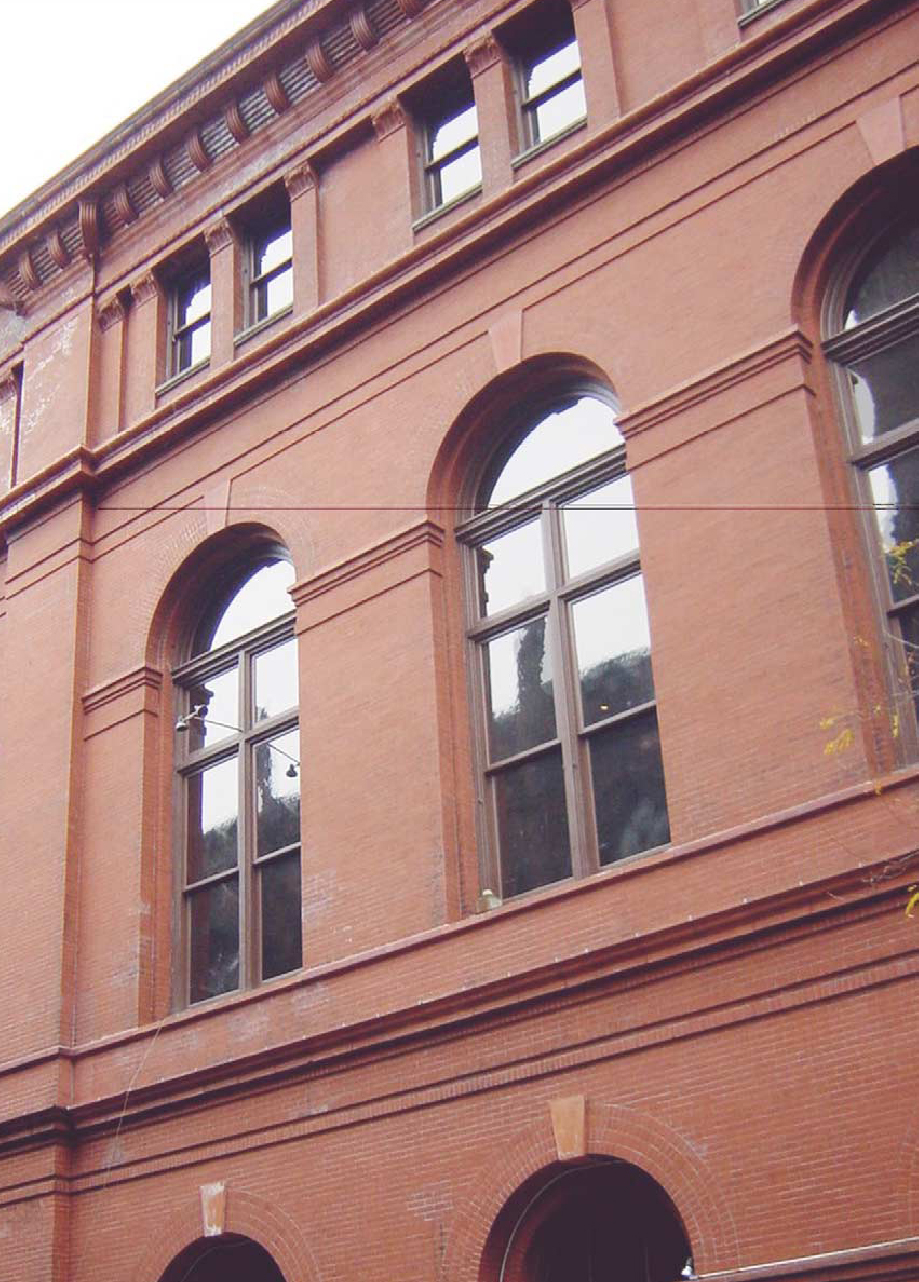EVALUATION OF CLEANING METHODS FOR THE EXTERIOR BRICK AT THE BROOKLYN HISTORICAL SOCIETYCLAUDIA KAVENAGH, & GEORGE WHEELER
6 CONCLUSIONSThe cleaning of buildings is propelled by both aesthetic and materials science considerations. In the case of the Brooklyn Historical Society, both apply: (1) soiling has altered the play of light on ornamented surfaces of the brick and terracotta and has disrupted coloristic effects by random distribution of gray and black on otherwise orange-red surfaces; (2) particulate components of soiling block pores, and hydrocarbon components add water repellency to brick surfaces. While these conditions reduce infiltration of rainwater through the external surfaces and provide Several factors influenced the selection of cleaning materials and methods for the brick. First, the decision to use proprietary cleaners to ensure uniformity of composition narrowed the selection field. Second, the field was further narrowed in that only two of these proprietary cleaners were effective in removing soiling. One of these cleaners—the ammonium bifluoride–based Bac2Nu—left a disfiguring white haze, and the other, the hydrofluoric The final element in developing the cleaning process for the building was the decision to remove the gypsum-based pointing and replace it with a lime-cement-sand–based mortar before cleaning commenced. This method reduces the risk of movement of gypsum from the mortar into the brick and reduces subsequent damage during the cleaning process and for the future of the building. Project specifications included the testing of brick after cleaning to determine if salts were mobilized despite the precautions taken, with provision for their removal by poulticing if necessary. Masonry cleaning and repointing were performed during the spring, summer, and fall of 2002. At the completion of the exterior cleaning, a large percentage of soil had been removed from the brick, and the color of the brick was uniform and identical in color to the unweathered surfaces of the brick. Soil that was not removed after three applications of the specified cleaner was left on the brick (fig. 16, see page 74).
|
